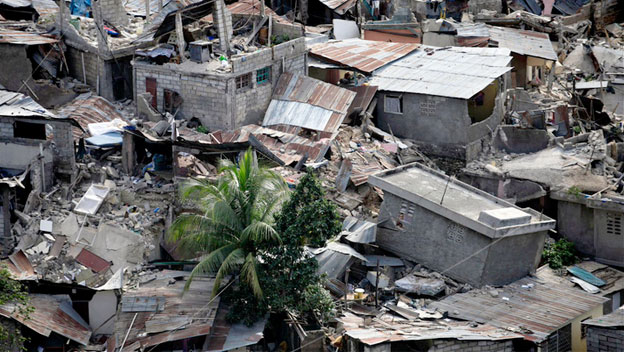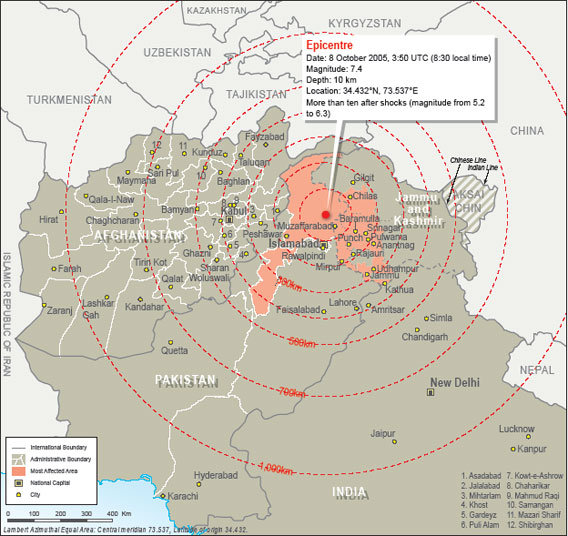
The region of Kashmir is located at the juncture of the Eurasian and Indian tectonic plates which is considered seismically unstable. When they collided, Pakistan, Afghanistan, and Northern India were gravely affected.

The juncture of the earthquake was devastating as buildings literally slid off of the earth. Entire parts of towns ended up sliding off of cliffs and the landslides buried roads and buildings. Large cracks were formed in the once-flat ground and towers collapsed. Many of the survivors who were left in this desolation froze to death in the winter. Furthermore, necessary resources were scarce as food was an issue and broken sewage pipes introduced contamination to the water supply, spreading disease those who drank it.

This earthquake had affected the lithosphere(tectonic movement), the biosphere(humans and infrastructure), and the hydrosphere(water supply). The earthquake caused the lithosphere to change shape as the tectonic plates moved. Cracked ground and landslides also indicate an effect to the lithosphere. The humans who were killed/injured, the dying animals, scarcity of plants, and destroyed infrastructure are all part of the biosphere which was affected by the shock of the lithosphere. Furthermore, the pollution of the water supply involves the hydrosphere which was initiated by the lithosphere and effected the biosphere (humans). Hydrospheric change in wave activity could have been initiated by the movement of the lithosphere. The movement of the lithosphere may have also affected the atmosphere by releasing methane gas. Methane itself has been known to cause global warming in the atmosphere which would affect the humans of the biosphere.Moreover, global warming affects the hydrosphere by causing natural sources of freshwater to melt. This earthquake drastically impacted the four spheres.
No comments:
Post a Comment